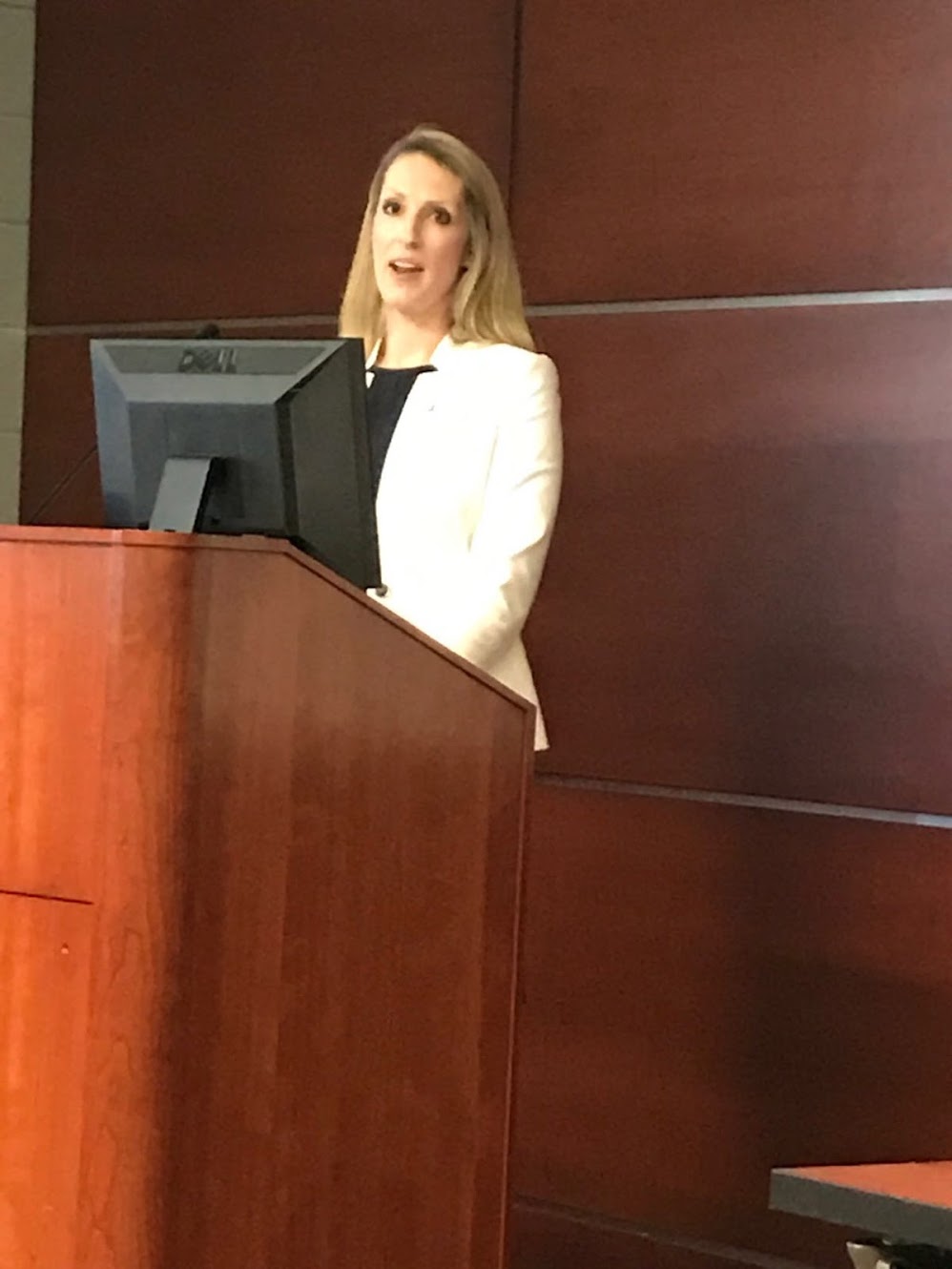Economic Equality Caucus
which advocates for economic equality across the USA.
| Home | Organizational Structure | State Coordinators | Executive Director | Caucus Articles | Memberships | |||||
| "Delta Vision, Delta Voices" | ||||||||||
|
Help Advocate for Economic Progress and Equality. Donate to the Delta Caucus/Economic Equality Caucus. |
||||||||||
Delta Grassroots Caucus Events

Credit Michael Hibblen/ KUAR News, Arkansas Public Radio; Former President Bill Clinton speaking to the Delta Grassroots Caucus on May 2, 2013, at the University of Arkansas Clinton School of Public Service, Little Rock

U. S. Senator John Boozman, Arkansas, at a Delta Grassroots Caucus meeting at the US Capitol

Brad Cole, Executive Director of the Municipal League of Illinois; previously a senior aide to former Republican US Sen. Mark Kirk of Illinois, earlier Mayor of Carbondale, Illinois, veteran Delta regional advocate, speaking at the Delta regional conference in West Memphis, Arkansas on April 26, 2019.

President Bill Clinton makes a comment to Delta Caucus Director Lee Powell at a meeting in Blytheville, Arkansas (in the northeast Arkansas Delta) on Nov. 2, 2014

The Delta Caucus would like to pay tribute to the late, great U.S. Sen. Thad Cochran of Mississippi, a powerful force in the US Senate for decades and a champion for the Delta. Sen. Cochran passed away on May 30, 2019. He spoke to the Delta Caucus on many occasions over the years (he is pictured above speaking to a Caucus event on Capitol Hill in Washington, DC) and his thoughtful, courteous and bipartisan leadership will be sorely missed.

Marcie Lawson, Executive Director, Sikeston, Missouri Regional Chamber and Area Economic Development Corporation, speaking at the Delta regional conference in West Memphis, Arkansas on April 26, 2019.

Alan Gumbel, Greater Memphis Alliance for a Competitive Workforce, Memphis, Tennessee, speaking at the Delta regional conference in West Memphis, Arkansas on April 26, 2019.

Mayor Shirley Washington of Pine Bluff, AR, speaking to the Delta Caucus at the Arkansas Capitol Rotunda in 2017.
Regional strategic planning & DRA budget update--first in a series of messages
Posted on June 23, 2009 at 10:07 AM
We would like to summarize an extensive amount of information about regional strategic plans and also give a brief update on the Delta Regional Authority budget. Some of these planning documents are quite lengthy–such as the June, 2008 Delta Regional Authority plan of about 135 pages, or the more concise Arkansas state regional plan of about 60 pages. On the whole, we believe that the states and the DRA have presented some very useful strategic planning and they have greatly improved since the authority’s early days. We would also like to offer some constructive criticism, but this should not detract from our basic position that the DRA has greatly improved its strategic planning from its earliest days when it was a very new agency.
The column to which we referred in the June 16, 2009 posting on this site in fact confused matters greatly. This column referred to the June, 2008 DRA plan as if it had been completed quite recently. The 2008 plan indicated that it was supposed to cover a five-year period up to 2013, although the change in administration obviously is a major transition after 2008 from the Bush to the Obama administration. Of course, the 2008 plan was completed when George W. Bush was President.
More seriously, this column alleged that the critical mass analysis in that plan held that funding should go to communities that have attained critical mass and that smaller communities in general should receive far less funding. This view is erroneous. The plan in fact encourages all Delta communities to develop critical mass. We encourage you to read the planning documents at dra.gov. We have discussed the column previously and there is no point in doing so further.
These plans are available at dra.gov. However, it is obvious that people with busy jobs do not have time to wade through a document of 135 pages. One of our duties as a public interest advocacy group is to analyze these plans, so we are offering a condensed summary in a series of messages.
Here is a key quote on page 9 of the DRA’s June, 2008 strategic regional plan, “Rethinking the Delta:”
“The federal grant program will remain open to all communities in the Delta, regardless of size or wealth. The purpose is not to reward those communities that have already achieved critical mass; rather, it is to provide investment strategy for those Delta communities that have not.”
It would be difficult to state a more clear refutation of the incorrect view that the critical mass analysis simply holds that funding should go to larger communities that have already attained a certain “critical mass.”. Enough said.
It is true that there is one section clearly drafted by a consulting firm that utilizes jargon and is not useful to the general public. We will give some constructive criticism along these lines further in this series.
We would offer several conclusions to start with, and then we will summarize them in greater length. Even this summary will require some specifics, because these are complex issues that do not lend themselves to slogans and generalizations.
1) First, it is obvious that the June, 2008 plan was written in what is now a different era. Since President George W. Bush was President at that time, of course it contains quotes from President Bush. Obviously we are in the administration of President Obama now and his administration has different economic policies and will soon have different personnel as Federal Co-Chair and Alternate Federal Co-chair, who are Presidential appointees and serve at the pleasure of the President who appointed them.
2) The June, 2008 DRA strategic regional plan has many pluses, along with a few flaws. We do not agree with everything in the document, but that is not surprising for such a lengthy plan. In particular, the plan summarizes several of the achievements of the DRA in its early history, and it is good to give credit where credit is due:
a. The Delta Development Highway System plan. This was developed after extensive consultation with local, state, regional and federal officials, transportation experts and many others. It has a great deal of specific, useful recommendations. This is a highly useful, practical document that advocates can utilize when they request substantial investments in the Delta in completion of the Interstate 69 Corridor and other improvements. This is far better than just a generalized request for more funding. We have commended this plan on many occasions, and it is useful to have the 2008 strategic plan commend it in the context of a larger regional framework.
b. Similarly, the Delta information technology plan is useful. Expanding broadband access to the underserved Delta is clearly a vital goal. (The more up to date issues on this point are obviously in the stimulus package passed early in 2009 by the current administration, providing extensive funding for expanded broadband access to underserved rural areas. This funding is certainly consistent with the broader goal of expanding information technology in the region.)
c. State plans–We should recall that the DRA is a federal-state partnership. We would encourage people to read the Arkansas state plan, because it is an exemplary model of everything a strategic plan ought to be. Governor Mike Beebe consulted officials at the state, regional, and local levels in this cooperative effort. This plan has a great deal of down to earth, practical information. It looks forward to the next five years and will be a viable document for that entire period. It provides guidelines as to how funding applications should be prepared and has information for drafting these applications.
To read the regional or state plans, see dra.gov, click at the top at “Programs to advance the Delta,” to go the bottom and click on “regional development plans” and you will see the regional plan as “DRA”, and then the state plans such as “Arkansas,” etc. In congratulating Governor Beebe, the Arkansas Congressional delegation, local officials and others who collaborated on that plan, we in no way mean to say anything negative about the other state plans. We are just citing one example of an excellent plan.
d. Other successes of the DRA are noted: the federal grant program, the Delta Doctors program, the Healthy Delta Initiative, as summarized below in this message.
e. DRA funding issue: The one major problem with the DRA in the period from 2001 to January, 2009, is one that this document of June, 2008 obviously was not going to mention: that is the fact that the Bush administration constantly sought to cut the budget in half for the DRA. The Federal Co-Chairman’s boss at this time was President Bush, so this is not a criticism of him. The DRA budget was originally envisaged at $30 million when it was signed into law in late 2000, was cut to $5 million by 2004, and due to Congress’ leadership and to be exact the Senate, the figure recovered to $12 million. The June, 2008 document cited President Bush and quoted him in a positive light. We are in a new era today and this plan is now dated to the extent it quotes the previous administration. Nonetheless in many other respects it has useful information.
To set the record straight purely as a factual matter, the Obama administration’s first budget request this year was $13 million for the DRA. This is more than double the figure that the Bush administration requested, each year asking for a major cut down to $6 million. Each year the DRA’s advocates in Congress in Arkansas, Mississippi and across the region worked hard to increase it to $12 million. All the Members of Congress from the eight-state region should be commended for this result, but we believe credit should be given where it is clearly due, and Senator Blanche Lincoln of Arkansas and Senator Thad Cochran of Mississippi were particularly stalwart in this effort-each year for several years the Senate figure was approximately double the House figure, and the Senate figure prevailed in conference for the final result. Last year Senator Mary Landrieu of Louisiana also provided leadership, as did many others, including the Alabama, Missouri, Illinois and Tennessee Senators and many others too numerous to name here from both parties. We congratulate the regional Congressional delegation on this point.
Now that we are starting out at $13 million, those Members of Congress no longer have to fight to keep the budget from being cut in half. We of course would prefer to see the $13 million be increased back to the original $30 million. But it is obvious that the increase in the administration’s budget request from $6 million to $13 million is a step forward. We encourage the Obama administration to follow through on then Senator Barack Obama’s repeated public pledges to expand the DRA budget to a level of equity with the Appalachian Regional Commission based on objective criteria such as population, size, need, poverty levels and other essentials of fairness among the major regions of the country. The first budget was a step in the right direction and we need more progress each year.
We know the stimulus package, the highway bill, important nutrition legislation have a far greater impact on the region than the very small DRA budget at the present time.
GIVING CREDIT WHERE CREDIT IS DUE:
I. The DRA federal grant program-the June, 2008 regional plan correctly describes this program as highly successful:
The Delta Regional Authority’s federal grant program funded 385 projects during its first six years, using $56 million of DRA funds. That $56 million leveraged $278 million of other federal funds and $1.2 billion of private funds.
It is estimated that this investment of more than $1.5 billion in the region has helped create or retain more than 32,000 jobs while providing drinking water and sewer services to almost 25,000 families. More than 6,300 Delta residents received job training due to this investment.
The DRA has a rare statutory authority to utilize its federal grants as a local match. This enables impoverished communities in the Delta to leverage much greater sources of funding, because previously these communities might have lacked the resources to provide even the relatively small local match.
By statute, 75 percent of the funding must go to distressed counties. The actual totals have far surpassed that percentage and are closer to 93 percent or more going to distressed counties. 50 percent of the funding has to go to transportation and infrastructure projects.
II. We have already noted the value of the strategic plans regarding the Delta Development Highway system and the Delta information technology plan (pages 30 to 35 of “Rethinking the Delta”). The June, 2008 regional plan is correct to cite these reports as excellent examples of strategic planning.
III. The Delta Doctors program-the June, 2008 regional plan correctly recommends continuing support for this innovative program:
This program has brought approximately 104 doctors to the Delta who otherwise would not have been here. The insufficient number of health care professionals is a serious problem in the region, and this program is one constructive effort to address it. Clearly we need many other initiatives as well, but this is an excellent program that makes progress through innovation and does not require additional appropriations of taxpayers’ dollars. This innovative program permits foreign physicians who are educated in America to serve in underserved areas for three years. Many have chosen to stay here longer than that after developing a significant number of patients.
The DRA has the unusual statutory authority to recommend J-1 visa waivers for foreign medical school graduates who would otherwise be required to return to their home countries for at least two years after graduation. Among the requirements is the fact that they must provide care to the indigent, Medicaid and Medicare recipients and must provide primary care in their specialty fields for at least 40 hours. The program also has guidelines that assure that the foreign medical graduates are not taking employment opportunities from American doctors. The regional plan was right to praise this excellent program.
IV. The regional strategic plan correctly endorses continuation of Healthy Delta Initiative:
The DRA made the decision that health care should be regarded as a crucial component of economic development. We are aware that some people disagree with the decision and argue that health care should be considered a separate category. We agree with the DRA that health should be considered vital to the economy. The critical mass analysis places healthy people first in its community growth characteristics. We agree with this assessment, for the following reasons:
Obesity, diabetes and other health maladies have long reached epidemic proportions in the Delta. The DRA board voted in 2005 to devote almost $1 million to a diabetes education and prevention program. The Healthy Delta initiative attempts to address the health care dilemma, beginning with diabetes. The statistics cited in the report (page 23) are telling: the American Diabetes Association indicated that poorly treated diabetes leads to 88 million disability days per year; complications from diabetes cost the nation $132 billion in lost productivity and medical costs, and these figures are projected to increase to $156 billion by 2010 and $192 billion by 2020. Within the DRA states, 2.57 million people suffer from diabetes. Consider that the Delta has an incidence of diabetes far higher than the national average, and the devastating economic impact cannot be denied.
Mississippi had the second highest prevalence of diagnosed diabetes per 100 adults in the country from 1994 to 2005, Louisiana was fourth, Alabama fifth and Tennessee sixth. Arkansas fared better at 21st, but the Delta area of the state lags significantly behind the rest of the state. We are aware that this is controversial but our view is that the DRA was right to place significant emphasis on health as an engine of economic development.
V. IMPROVEMENT IN MORE REALISTIC PERFORMANCE MEASURES FROM THE 2002 STRATEGIC PLAN TO THE 2008 STRATEGIC PLAN:
To put it as kindly as possible, the 2002 DRA strategic plan was not a very useful plan. Many of the Delta Caucus partners are veterans of the Clinton administration’s Delta Vision, Delta Voices report of 2000 (available on the Delta Caucus website at www.mdgc.us), which had input from 20 federal agencies and departments, the governors, many Members of Congress, as well as many grassroots organizations. At that time we encouraged data and specific policy recommendations, while discouraging grandiose, vague declarations such as “By the year 2020, all Delta residents shall enjoy the same economic and educational opportunities as do all Americans.” First of all, the authors of the report would no longer be in office in 2020 and it is very easy to make grand declarations far into the future when those officials will no longer have any responsibility for completion of the goals.
Unfortunately, the 2002 strategic plan did have some unrealistic goals, such as stating that by the year 2025, the goals were to increase income levels, decrease unemployment and underemployment, and decrease dependency on federal transfer payments and support to the same level or better than the level in the Delta areas in each state as the DRA states as a whole. This goal meant that the impoverished Delta in east Arkansas would stand equal to or even surpass the prosperous central Arkansas and northwest Arkansas areas. Similar results would take place in the other states. This would be great if it happens, but it is unlikely to happen any time soon, and the DRA is one small agency with a small budget and staff that cannot hope to have a dominant impact by itself on socio-economic goals such as regional employment, income levels and dependence on federal transfer payments by itself. The 2008 strategic plan wisely and realistically realized this, and we applaud them for that. This is a clear indication of the agency’s progress since the days of its infancy in 2002.
Instead, the DRA 2008 strategic plan (pages 40-41) suggests a number of far more realistic performance measures: such as number of participants in workforce training and education programs, residents positioned for more employment opportunities, number of jobs created or retained, private and non-DRA investment ratios, households served with basic infastructure and services. They will keep track of average grants processing time. All of this will be monitored by independent audits and reviews. These are far more realistic performance measures and are a clear step forward.
To the extent that Congresssional and other public scrutiny contributed to this result, we applaud all those who served in the appropriate watchdog role. All agencies including the DRA need to be monitored and scrutinized and given constructive criticism.
We need to remember that the huge departments such as USDA, Department of Transportation, HHS, Labor, Small Business Administration, Education, and others have a far greater impact overall on the Delta than does the DRA and it would be ludicrous to place the entire responsibility for economic development in a region of 252 counties and parishes and more than 9.5 million people on one small agency. The agency has great value in that everything it brings to the region is over and above what the other large-scale programs bring. The leveraging of resources through relatively small DRA seed money has been cited, along with the Delta Doctors program, transportation and IT strategic plans, and other worthwhile activities.
Fundamentally, the DRA is a unifying force for the region. That is why we are basically supportive of the DRA as an institution and any criticism we give is intended to be constructive.
One might say that if the plan does place significant emphasis on previous accomplishments, is it not offering a great deal that is new? That might have some validity, although there is an effort to produce some new ideas that we will discuss further in this series of messages. But this is a classic case of whether you choose to view the glass as half full or half empty. We choose to see the merits in giving credit where credit is due and for that reason see these endorsements of previous positive activity as a plus.
This series will continue in the coming days, and we will offer some constructive criticism in the next message regarding the 2008 strategic plan. These summaries are obviously detailed, but they are also far shorter than the 135-page plan itself. Thank you. Lee Powell, MDGC (202) 360-6347
Back to the top